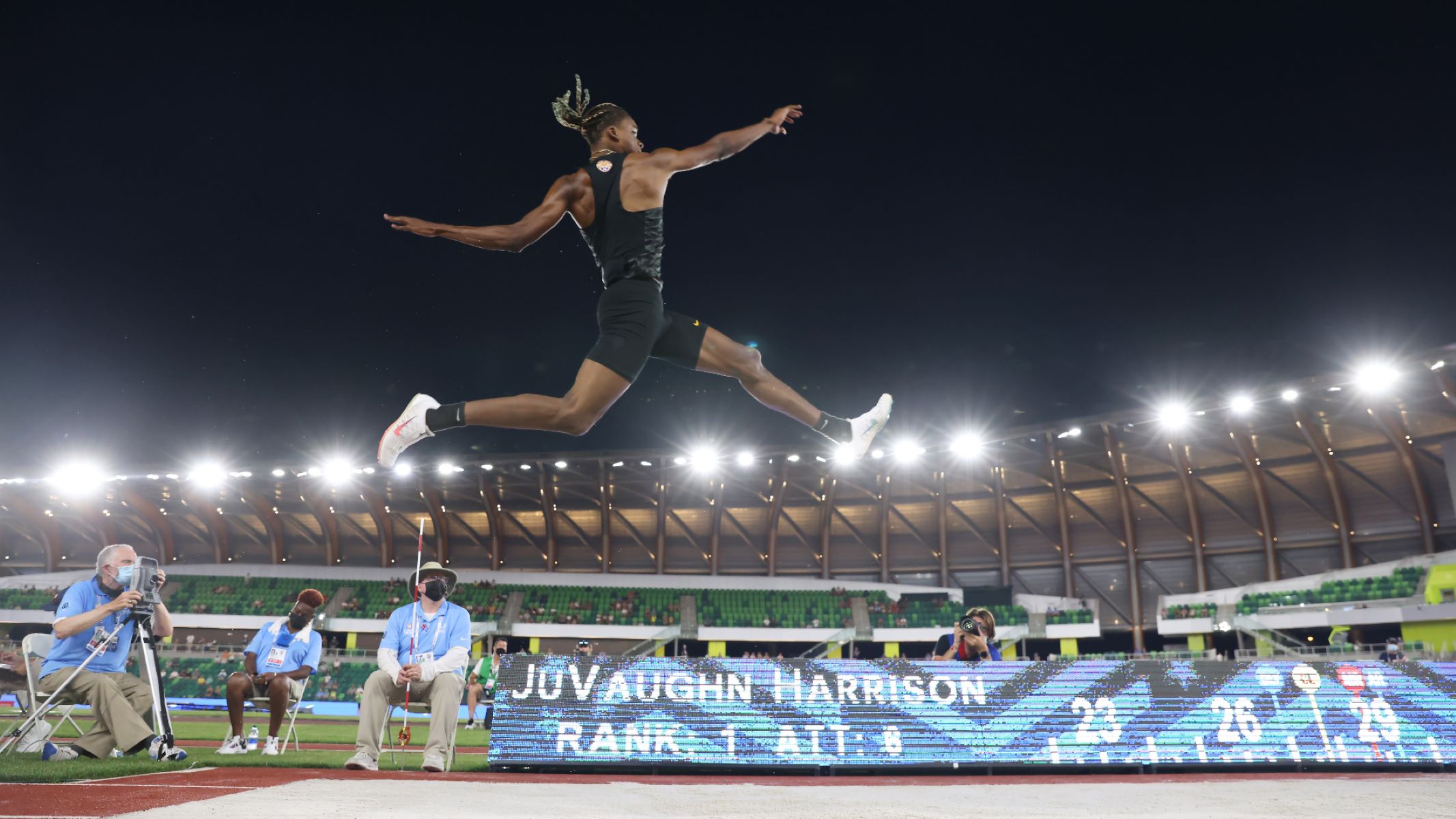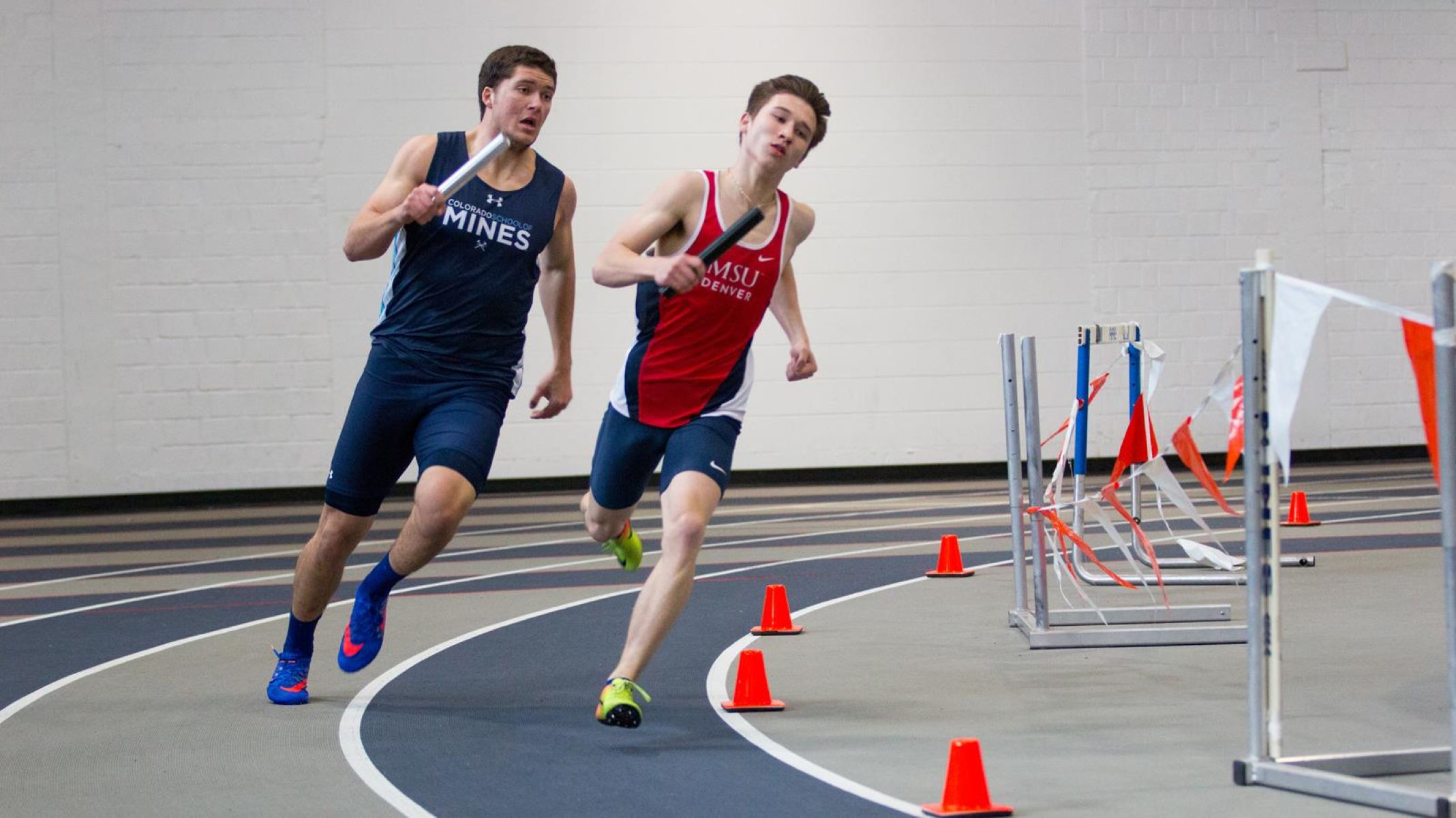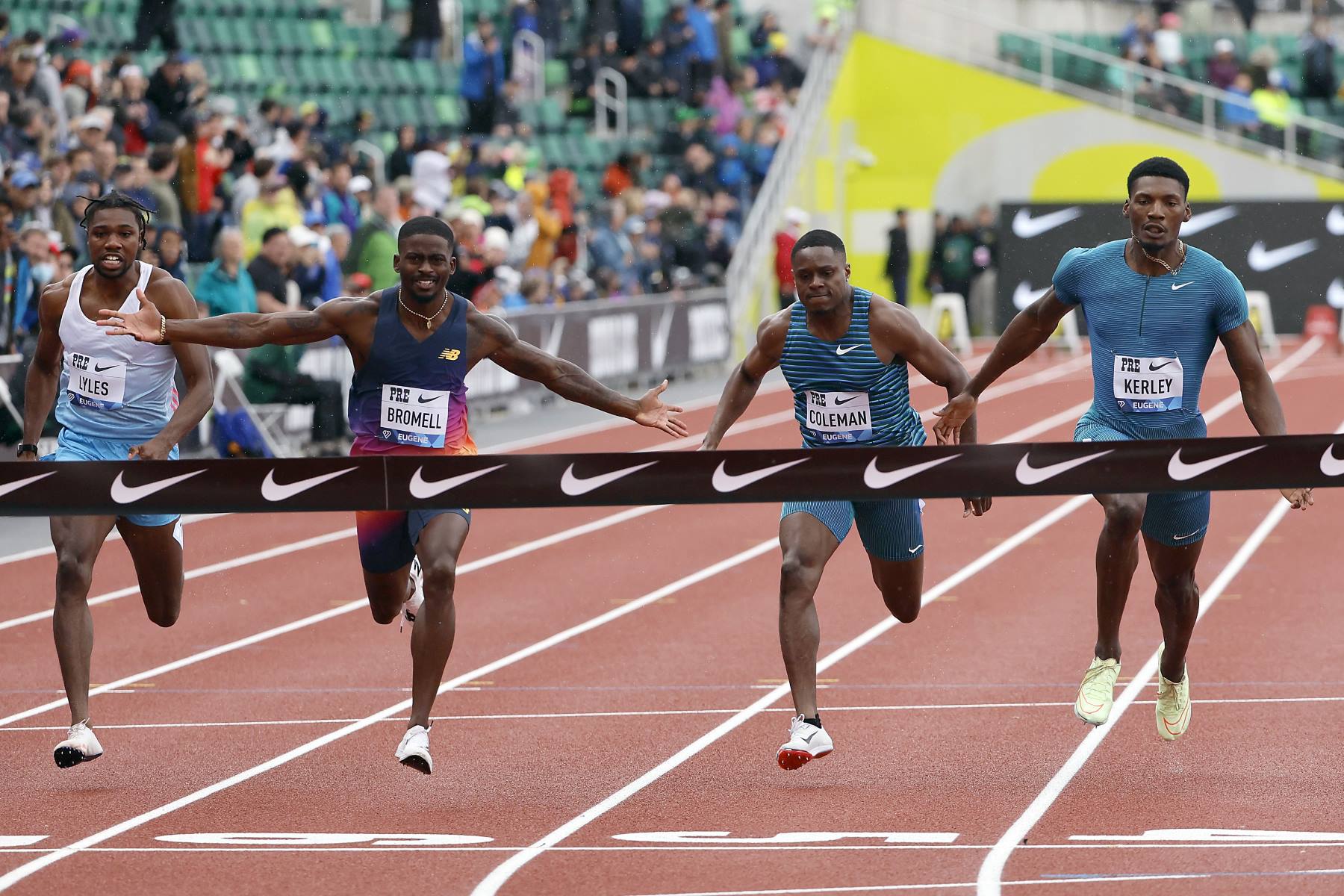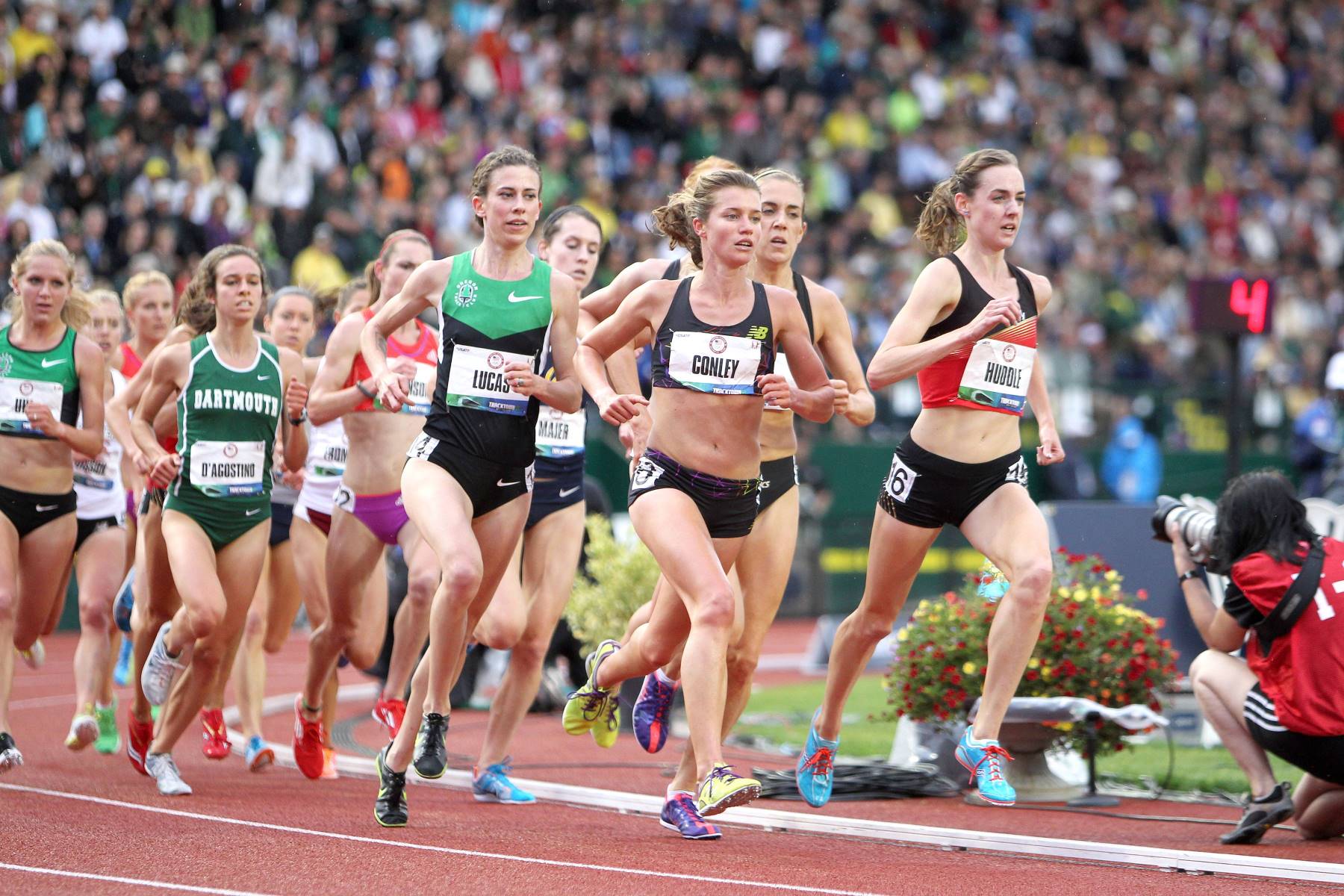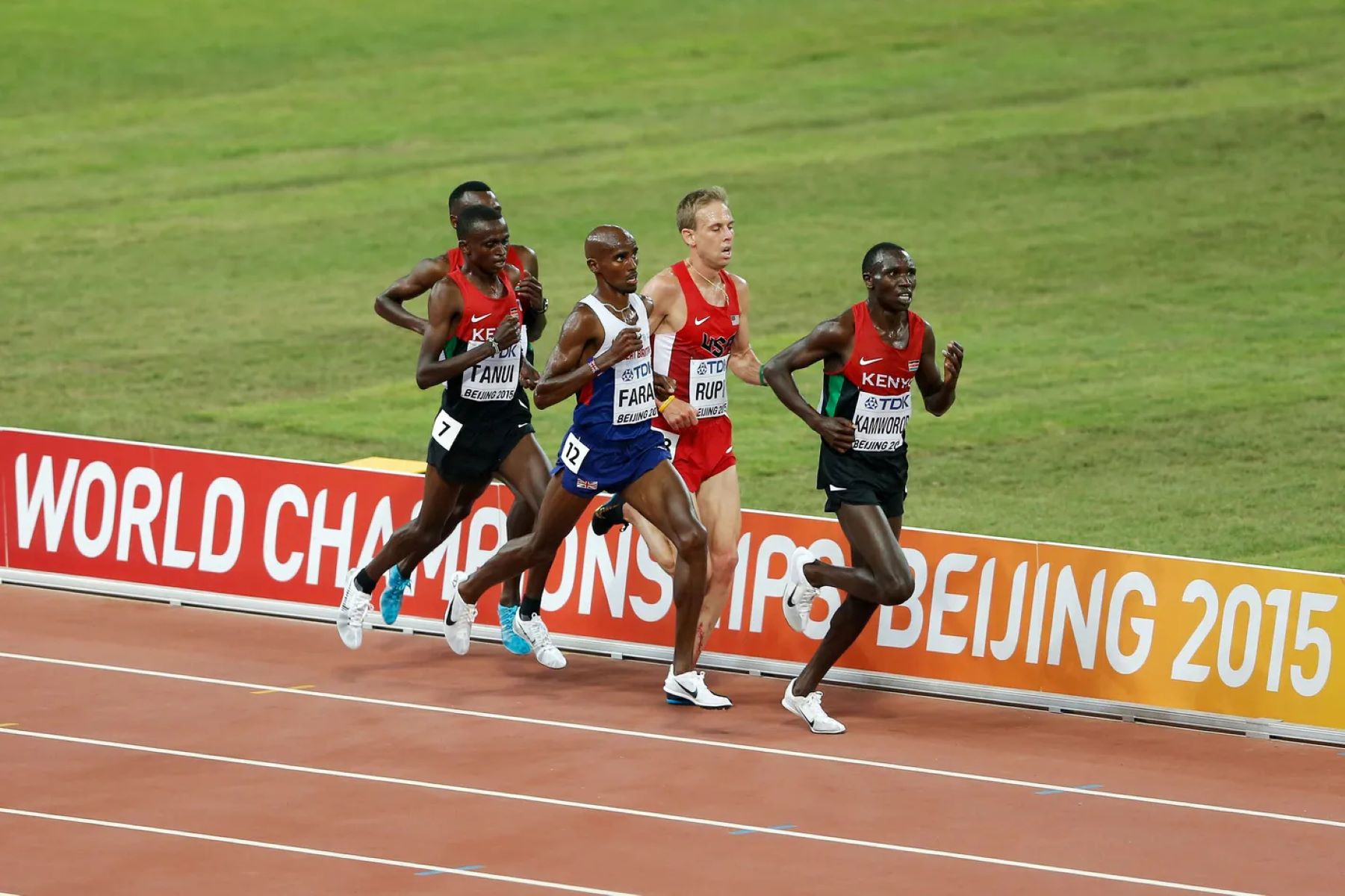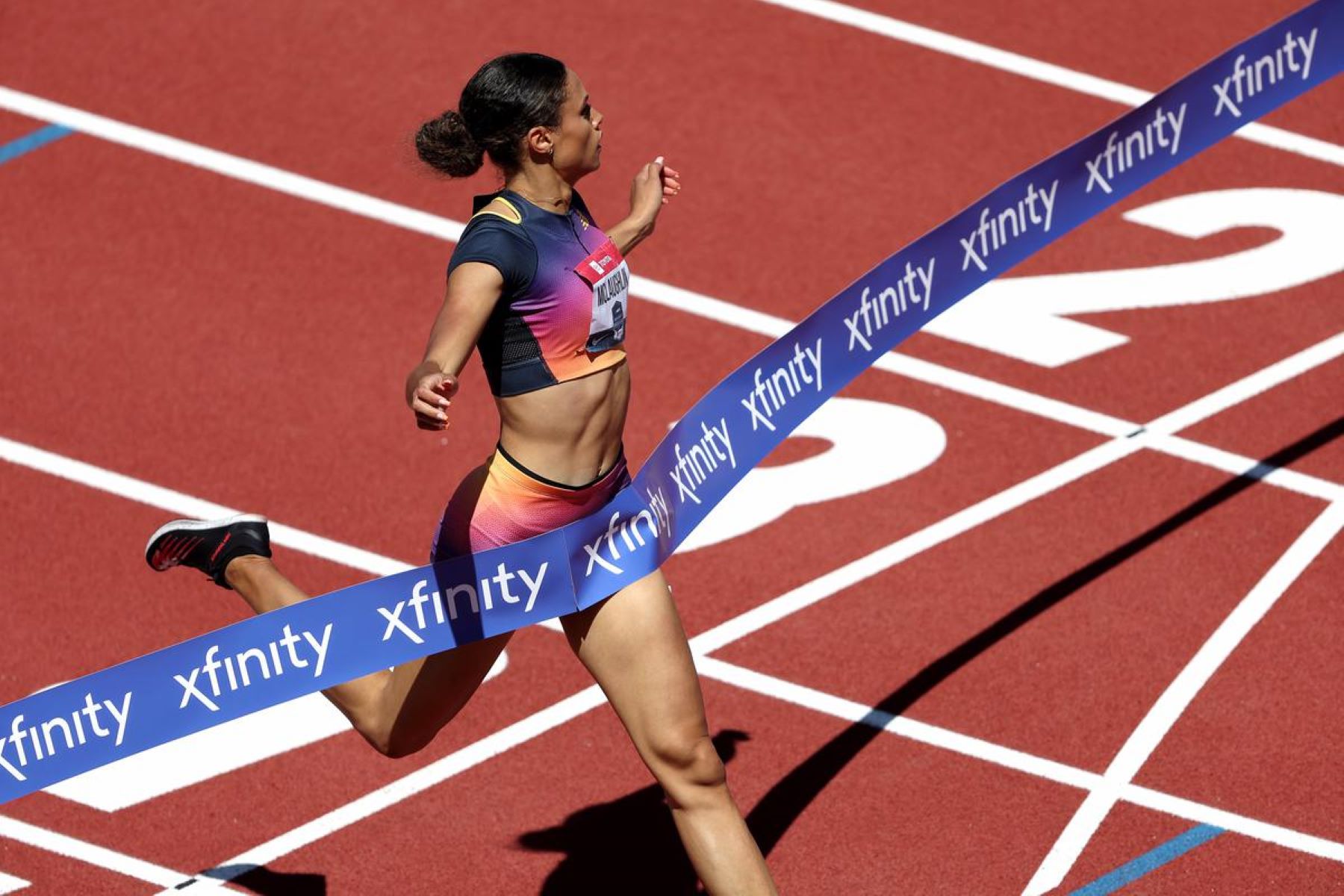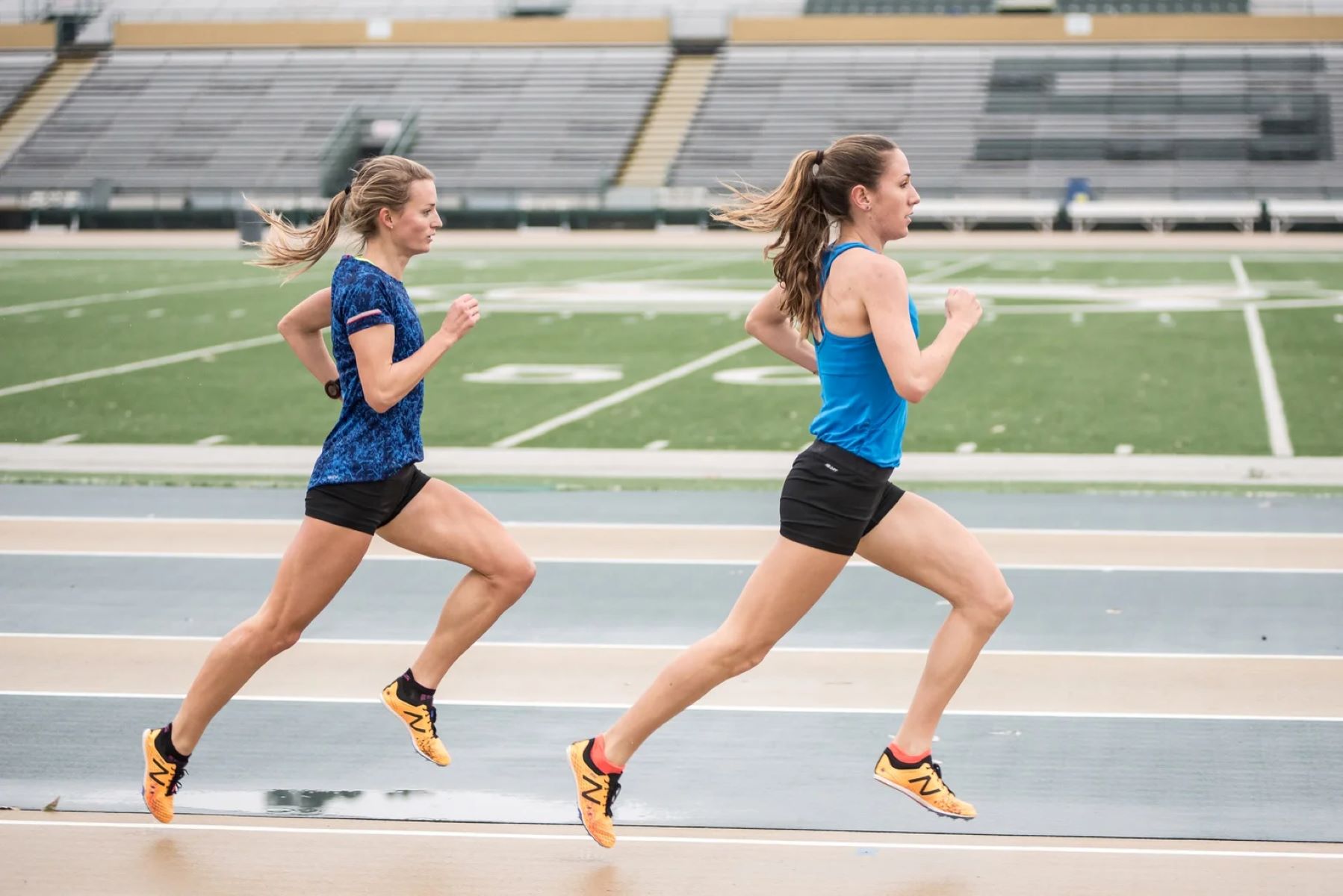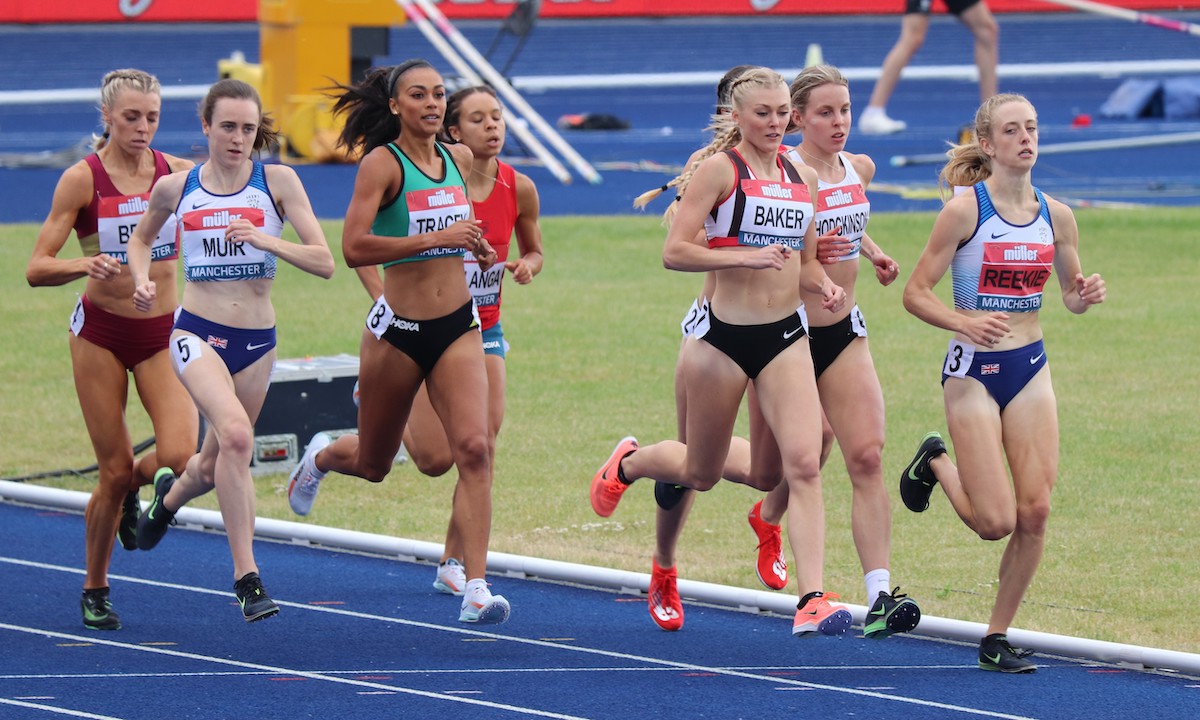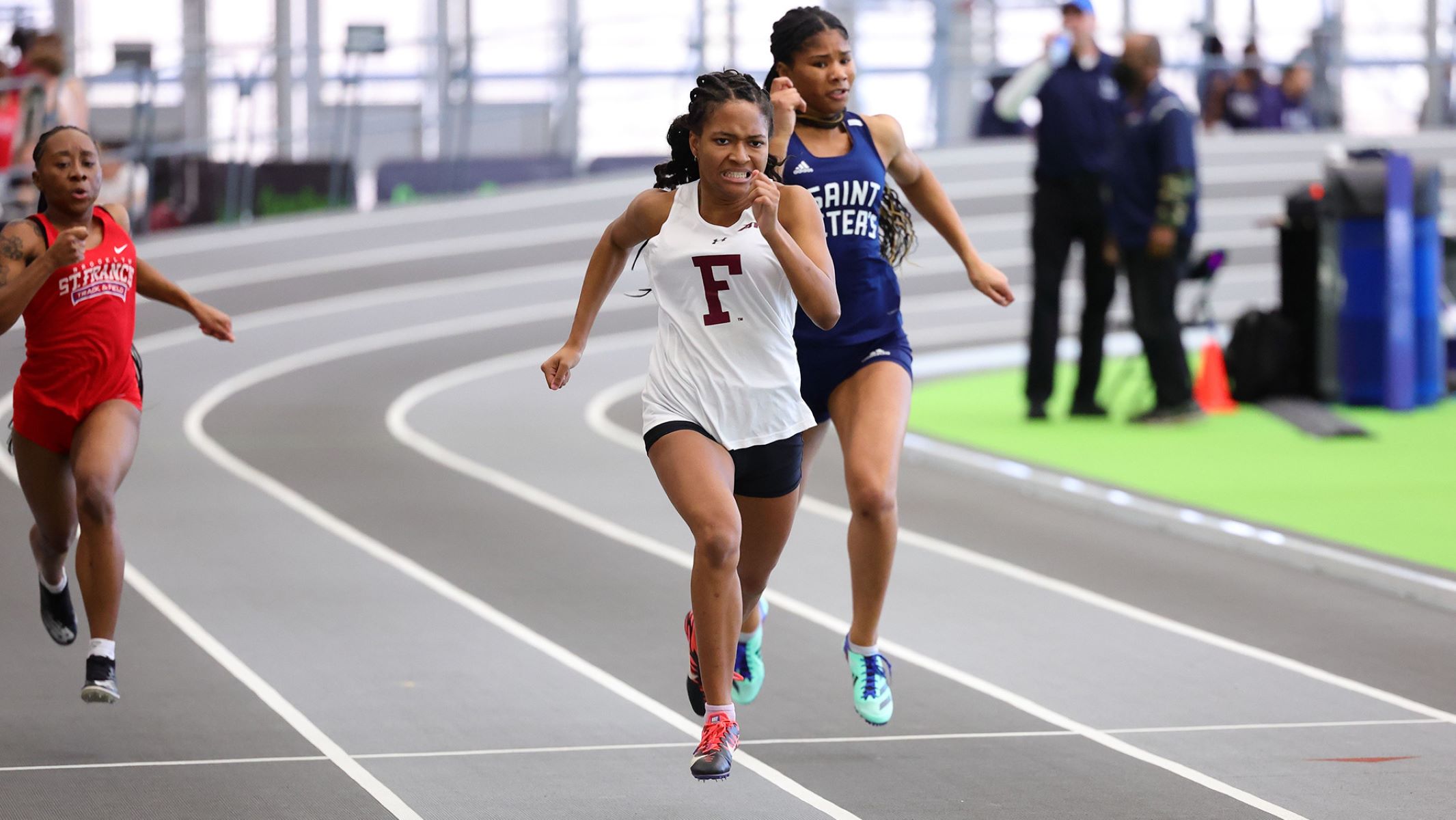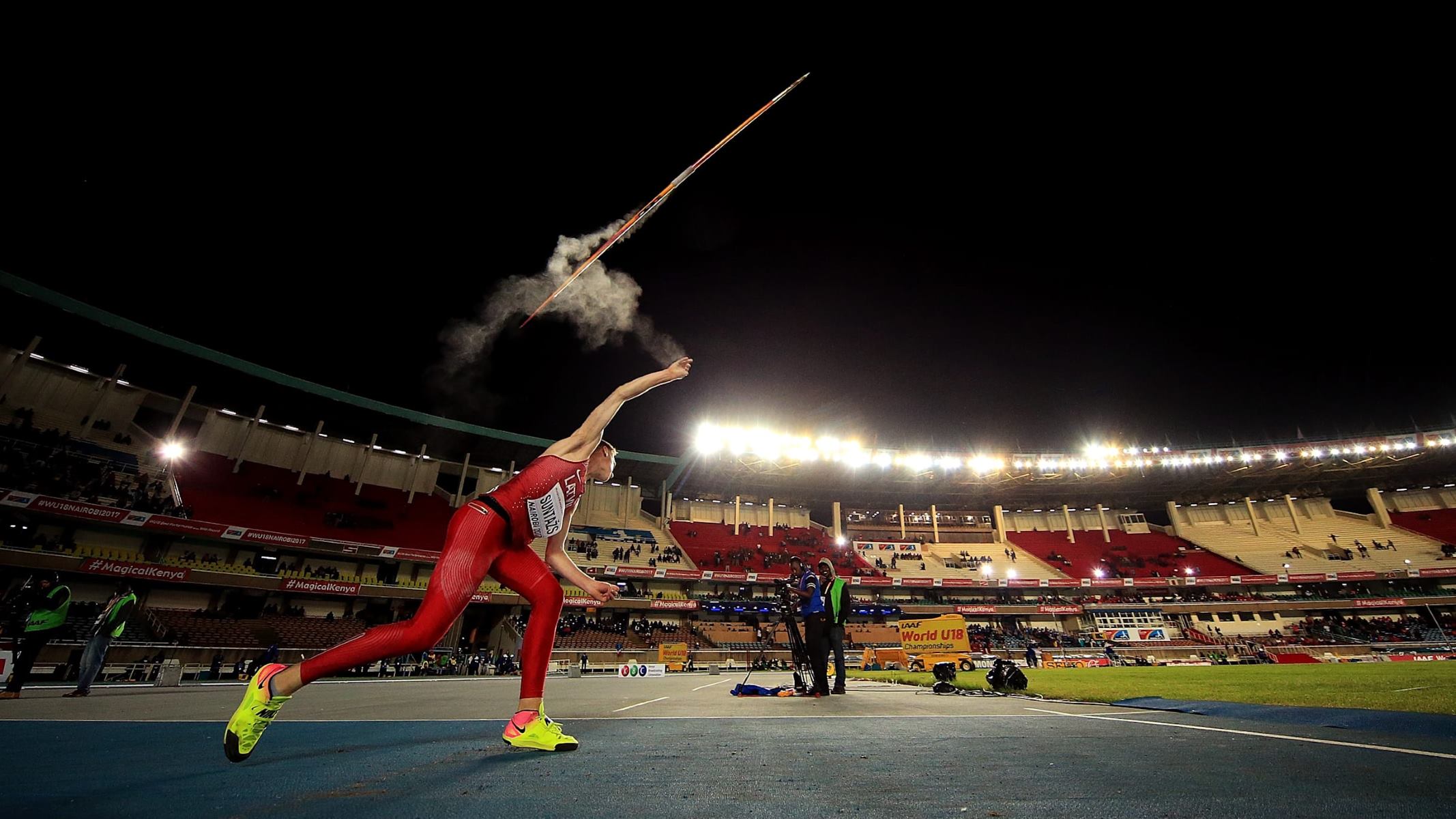Home>Misc>Featured>What Is The 1500-Meter Event In Track And Field
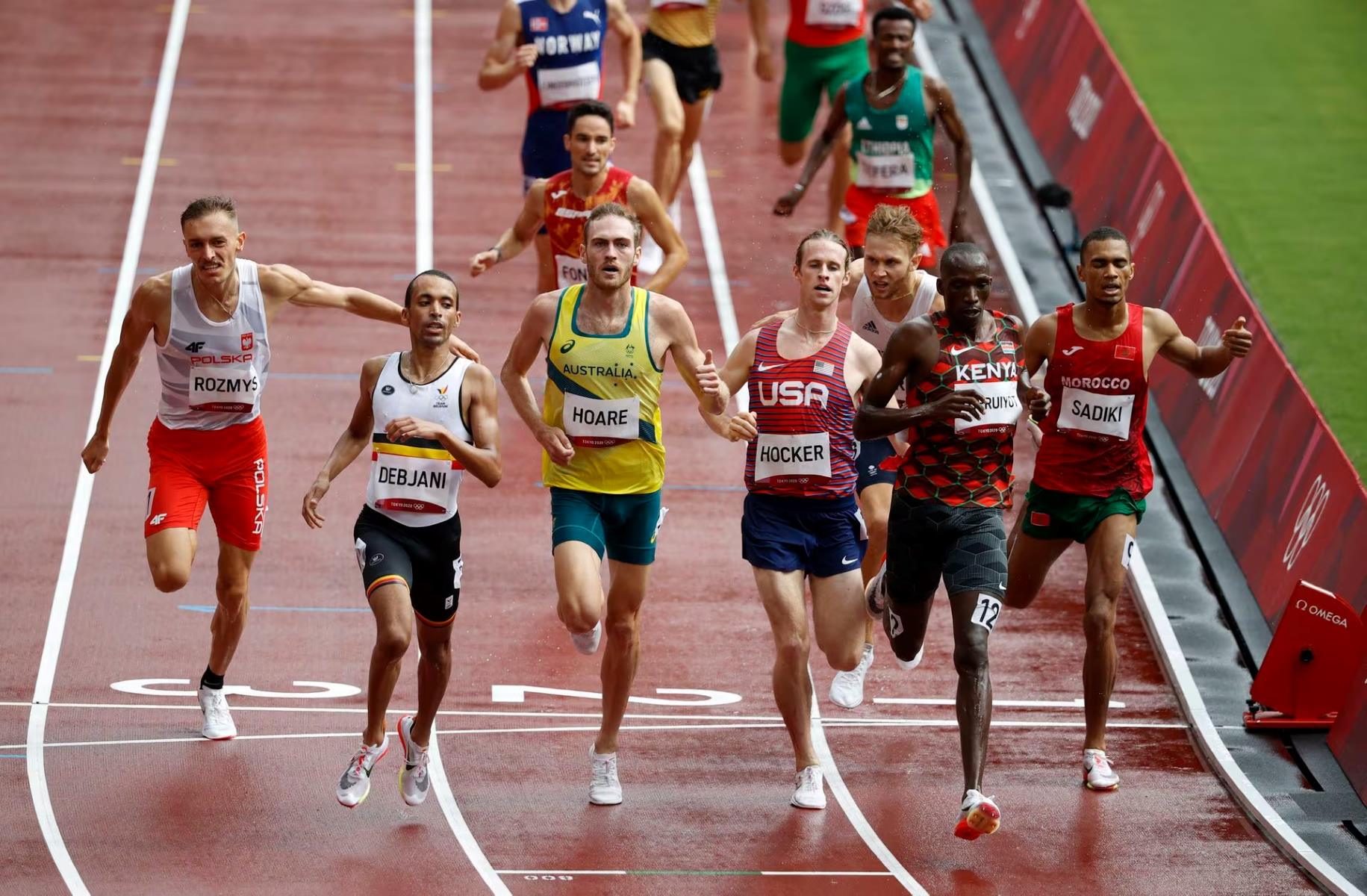

Featured
What Is The 1500-Meter Event In Track And Field
Published: November 12, 2023
Learn about the 1500 meter race in track and field. Discover the details, rules, and techniques of this featured event.
Introduction
Track and field events have long been a captivating spectacle, showcasing the remarkable athletic abilities of individuals from around the world. One such event that has gained widespread attention and admiration is the 1500-meter race. This middle-distance event tests both the speed and endurance of athletes, making it a thrilling competition to watch.
In this article, we will explore the ins and outs of the 1500-meter race in track and field. From its definition and history to its training and preparation, we will delve into the intricacies of this event. We will also discuss the techniques and strategies employed by elite runners to achieve success in the 1500-meter race, as well as the notable world records and performances that have etched their names in history.
Moreover, we will highlight the key differences between the 1500-meter race and other track events, such as the 800-meter and the mile. By understanding these distinctions, we will gain a deeper appreciation for the unique challenges and obstacles faced by competitors in the 1500-meter race.
Whether you are a seasoned track and field enthusiast or simply curious about the world of athletics, this article will provide you with comprehensive insights into the 1500-meter race. So, let us lace up our running shoes and embark on a journey through this thrilling event in the world of track and field.
Definition of the 1500 Meter in Track and Field
The 1500-meter race is a middle-distance event in track and field athletics. It is a metric race that measures exactly 1500 meters or approximately 0.93 miles. This race is often referred to as the metric mile, as it is the standard distance used in many international competitions.
The 1500-meter race is categorized as a middle-distance event, falling between the shorter sprints and the longer distance races like the 5000-meter and 10000-meter runs. It requires a unique blend of speed, endurance, and tactical skill. Due to its intermediate distance, the 1500-meter race demands athletes to strike a balance between short bursts of speed and maintaining a steady pace throughout the four laps around the track.
In competitive settings, the 1500-meter race is typically run on an outdoor track. The runners start from a staggered position, with each athlete assigned a specific lane. They must complete four full laps around the track, generally staying within their designated lane throughout the race. The goal is to cross the finish line first, either by outrunning the other competitors or by achieving the fastest time.
Unlike longer races, such as the 5000-meter or marathon, the 1500-meter race demands a higher level of anaerobic energy. It requires athletes to tap into their short-term energy systems, as the race duration is relatively shorter. This makes the 1500-meter race a true test of both speed and endurance, demanding athletes to maintain a balance between a fast pace and highly efficient energy utilization.
The 1500-meter race is known for its dynamic nature, where competitors must strategically position themselves throughout the race. It often involves calculated surges and tactical moves to secure a favorable position while conserving energy for the final sprint to the finish line.
Now that we have defined the 1500-meter race, let’s delve into its captivating history and development in the world of track and field.
History of the 1500 Meter Race
The origins of the 1500-meter race can be traced back to ancient Greece, where it was part of the ancient Olympic Games. However, the exact distance and format of the race varied during this time. It wasn’t until the late 19th century that the 1500-meter race became standardized and gained popularity in organized athletics.
In 1897, the International Association of Athletics Federations (IAAF) was established, and it adopted the 1500-meter race as an official middle-distance event. The decision to include this race in official competitions marked a significant milestone in the history of track and field athletics.
The 1500-meter race made its Olympic debut in 1900 during the Summer Olympic Games held in Paris. It quickly became one of the most prestigious events in track and field, drawing the attention of athletes and spectators alike.
Over the years, the 1500-meter race has witnessed numerous record-breaking performances, with athletes pushing the boundaries of human capability. Notable athletes like Sir Roger Bannister, Steve Cram, and Hicham El Guerrouj have left an indelible mark on the history of the event through their exceptional achievements.
One of the most famous moments in the history of the 1500-meter race occurred on May 6, 1954, when Sir Roger Bannister became the first man to run a mile in under four minutes. Bannister’s milestone achievement shattered the belief that it was physiologically impossible for a human to achieve such a feat. His accomplishment inspired a new wave of athletes, pushing them to strive for greatness in the 1500-meter race and beyond.
In recent years, the 1500-meter race has continued to captivate audiences around the world. It remains one of the most fiercely contested events in track and field, bringing together athletes from diverse backgrounds and countries to compete for glory on the global stage.
As the history of the 1500-meter race unfolds, new records will be set, and new legends will emerge. This event continues to push athletes to their limits, showcasing the immense talent and determination within the world of track and field athletics.
Importance and Significance of the 1500 Meter Event
The 1500-meter event holds immense importance and significance in the world of track and field. It is a race that showcases the perfect blend of speed, endurance, and tactical skill, making it a true test of an athlete’s capabilities. Here are a few reasons why the 1500-meter race is considered a highly esteemed event:
1. Middle-Distance Excellence: The 1500-meter race represents the pinnacle of middle-distance running. It requires a unique combination of speed and endurance, demanding athletes to maintain a fast pace while conserving energy for the final decisive push towards the finish line.
2. Tactical Mastery: The 1500-meter race is not just about sheer strength and speed; it also necessitates strategic thinking. Athletes must position themselves strategically throughout the race, carefully calculating when to surge ahead, when to conserve energy, and when to make a calculated move to secure victory.
3. Olympic Prestige: Being part of the Olympic Games, the 1500-meter race carries significant prestige. It attracts top athletes from around the globe who vie for the chance to represent their countries on the grandest sporting stage and etch their names in Olympic history.
4. Historical Significance: Throughout history, the 1500-meter race has witnessed extraordinary performances and iconic moments. From Roger Bannister’s sub-four-minute mile to Hicham El Guerrouj’s world record-breaking run, athletes have continuously pushed boundaries, inspiring future generations and leaving a lasting impact on the sport.
5. Audience Appeal: The 1500-meter race offers a unique blend of excitement and anticipation to spectators. It is a race that keeps viewers on the edge of their seats, as runners strategize their moves, execute bursts of speed, and create nail-biting finishes. The unpredictable nature of the race enhances its appeal, drawing in fans from all walks of life.
6. Developing Athleticism: The 1500-meter race plays a crucial role in developing an athlete’s overall athleticism. It requires a well-rounded training approach that focuses on speed, endurance, and tactical awareness. Competitors must possess not only raw speed but also the ability to sustain it over multiple laps, making it a comprehensive test of an athlete’s physical and mental capabilities.
Overall, the 1500-meter race is a profound representation of athletic prowess and determination. Its historical significance, strategic elements, and demanding physical requirements make it a celebrated event in the world of track and field. As athletes continue to strive for excellence and push the boundaries of human potential, the 1500-meter race will remain a platform for greatness and a source of inspiration for future generations.
Training and Preparation for the 1500 Meter Race
Preparing for the 1500-meter race requires a strategic and well-rounded training approach. Athletes must focus on building both speed and endurance while also fine-tuning their tactical skills. Here are some key aspects to consider when training for the 1500-meter race:
1. Endurance Training: Endurance is crucial in the 1500-meter race, as athletes need to maintain a fast pace over four laps. Long distance runs, tempo runs, and interval training can help improve aerobic capacity and teach the body to sustain a consistent pace.
2. Speed Workouts: Speed work is essential for the 1500-meter race to develop the ability to make quick accelerations and enhance overall running efficiency. Sprint intervals, hill sprints, and track workouts focusing on shorter distances can help improve speed and power.
3. Plyometrics and Strength Training: Plyometric exercises, such as bounding and box jumps, can improve leg power and stride length. Additionally, incorporating strength training exercises, such as squats and lunges, can enhance overall muscular strength and reduce the risk of injuries.
4. Specific Race Pace Training: It is crucial to practice running at the target race pace during training sessions. This helps athletes develop a sense of rhythm and familiarity with the required speed, making it easier to maintain an optimal pace during the race.
5. Technique and Form: Proper running technique is vital in the 1500-meter race to optimize efficiency and reduce energy wastage. Athletes should focus on maintaining an upright posture, relaxed shoulders, and a quick turnover of the legs.
6. Mental Conditioning: Training the mind is equally important in the 1500-meter race. Athletes need to develop mental toughness, focus, and resilience to overcome the physical and mental challenges faced during the race. Visualization, positive self-talk, and goal-setting techniques can help enhance mental preparedness.
7. Race Strategy: Analyzing the competition and developing a race strategy is crucial for success in the 1500-meter race. Athletes must consider factors like pacing, positioning, and when to make strategic moves, such as surges or kicks, to outmaneuver opponents and secure victory.
8. Rest and Recovery: Adequate rest and recovery are essential to prevent overtraining and allow the body to adapt and improve. Proper nutrition, hydration, and quality sleep should be prioritized to optimize performance and reduce the risk of injuries.
Preparing for the 1500-meter race requires a well-structured training plan that balances speed, endurance, strength, and mental conditioning. By focusing on these key aspects and maintaining consistency in training, athletes can maximize their performance and achieve success in this challenging middle-distance event.
Techniques and Strategies for Running the 1500 Meter
The 1500-meter race requires a combination of physical agility, mental focus, and strategic decision-making. Here are some key techniques and strategies that can help athletes excel in this challenging middle-distance event:
1. Pacing: Maintaining a consistent and controlled pace is essential in the 1500-meter race. Athletes should avoid going out too fast in the early stages, as this can lead to fatigue later on. Instead, starting with a slightly slower pace and gradually increasing the speed throughout the race can help conserve energy for a strong finish.
2. Positioning: Strategic positioning throughout the race can be crucial in avoiding unnecessary energy expenditure and allowing for advantageous moves. Athletes should aim to find a comfortable position without getting boxed in or stuck behind slower runners. Assessing competitors and making calculated maneuvers to move up in the field can help secure a better position for the final sprint.
3. Efficient Form: Maintaining an efficient running form is vital for conserving energy and improving overall speed. Athletes should focus on maintaining good posture, relaxed shoulders, a slight forward lean, and a quick turnover of the legs. Avoiding excessive arm swinging and unnecessary tensing of muscles can help conserve energy for the later stages of the race.
4. Surges and Kicks: Well-timed surges and kicks can be effective strategies in the 1500-meter race. Athletes can make strategic moves to surge ahead and create gaps between themselves and their competitors. Timing these surges in line with the natural ebb and flow of the race, such as the start of a new lap or when approaching a bend, can catch opponents off guard and provide a competitive edge.
5. Mental Focus and Resilience: Mental toughness is crucial in the 1500-meter race. Athletes should develop the ability to stay focused, maintain a positive mindset, and push through discomfort and fatigue. Visualizing success, practicing positive self-talk, and breaking the race down into smaller segments can help maintain mental sharpness and motivation.
6. Tactical Awareness: Understanding the strengths and weaknesses of opponents is essential in developing effective race strategies. Analyzing the competition beforehand and adapting tactics accordingly can help athletes make informed decisions during the race, such as when to make a move or respond to surges made by others.
7. Training for Speed and Endurance: To excel in the 1500-meter race, athletes must balance speed and endurance in their training. Incorporating speed workouts, such as interval training and hill sprints, can help improve anaerobic capacity and overall speed. Endurance training, such as long runs and tempo workouts, builds the necessary aerobic capacity for sustaining a fast pace for the duration of the race.
8. Race-Specific Workouts: Including race-specific workouts in training can help athletes acclimate to the demands of the 1500-meter race. This can involve practicing at target race pace, running intervals that simulate the race distance, or executing tactical drills to improve positioning and decision-making skills.
By combining these techniques and strategies, athletes can optimize their performance and enhance their chances of success in the 1500-meter race. It is important to experiment, refine, and adapt these strategies based on individual strengths, preferences, and race conditions.
Notable World Records and Performances in the 1500 Meter
The 1500-meter race has witnessed some legendary performances and astonishing world records throughout its history. From iconic runners to breathtaking finishes, here are some notable achievements in the 1500-meter event that have left an indelible mark on the sport:
1. Hicham El Guerrouj: Moroccan middle-distance runner Hicham El Guerrouj is widely regarded as one of the greatest 1500-meter runners of all time. He holds the current world record of 3 minutes and 26.00 seconds, set in 1998 in Rome. El Guerrouj’s dominance in the event also includes multiple World Championship titles and Olympic medals.
2. Noureddine Morceli: Algerian middle-distance runner Noureddine Morceli held the world record from 1992 to 1998. His time of 3 minutes and 27.37 seconds, set in 1995 in Zurich, showcased his exceptional speed and endurance. Morceli also won multiple gold medals at the Olympic Games and World Championships.
3. Seb Coe: British middle-distance runner Sebastian Coe set several world records in the 1500-meter event during the 1980s. His time of 3 minutes and 29.77 seconds, set in 1981 in Florence, solidified his place as one of the greatest middle-distance runners in history. Coe’s achievements also include winning Olympic gold medals and setting records in other distances.
4. Roger Bannister: Sir Roger Bannister, a British athlete, made history in 1954 by becoming the first man to run a mile in under four minutes. While not directly a 1500-meter race record, Bannister’s milestone achievement had a significant impact on the sport and inspired future generations of middle-distance runners.
5. Genzebe Dibaba: Ethiopian middle-distance runner Genzebe Dibaba holds the women’s world record in the 1500-meter race. She set the remarkable time of 3 minutes and 50.07 seconds in 2015 in Monaco. Dibaba’s speed, endurance, and racing prowess have made her one of the dominant forces in women’s middle-distance running.
6. Asbel Kiprop: Kenyan middle-distance runner Asbel Kiprop was known for his impressive performances in the 1500-meter race. He held the world title in 2011, 2013, and 2015, and also boasts an Olympic gold medal from the 2008 Beijing Games. Kiprop’s exceptional speed and ability to close races with powerful kicks made him a force to be reckoned with.
These individuals have left an extraordinary impact on the 1500-meter event with their record-breaking feats and mesmerizing performances. Their achievements serve as a testament to the physical and mental capabilities needed to compete at the highest level in this demanding middle-distance race.
Key Differences between the 1500 Meter and Other Track Events
While track events share certain similarities, each race distance brings unique challenges and characteristics. Here are some key differences between the 1500-meter race and other track events:
1. Distance: The most obvious difference between the 1500-meter race and other track events is the distance. The 1500 meters falls in the middle-distance category, whereas sprints like the 100 meters and 200 meters are considered short-distance events, and longer distances like the 5000 meters and 10000 meters are classified as long-distance events.
2. Pacing: Pacing strategies vary greatly between different track events. In sprints, athletes exert maximum energy from the start, aiming to maintain top speed for the duration of the race. In contrast, the 1500-meter race requires a balance between speed and endurance, with a more controlled pace and tactical use of energy.
3. Energy Systems: Due to the varying distances, different energy systems are utilized in each event. Sprints primarily rely on anaerobic energy systems, which provide short bursts of intense power. The 1500-meter race relies on both anaerobic and aerobic energy systems, as it requires sustained effort over a longer duration.
4. Training Focus: To excel in the 1500 meters, athletes must train their bodies for a combination of speed, endurance, and tactical decision-making. Sprints primarily focus on explosive power and acceleration, while longer distance races emphasize aerobic conditioning and the ability to maintain a steady pace.
5. Race Tactics: The race tactics employed in the 1500-meter race differ from those in sprints or longer distance events. In sprints, athletes aim to reach maximum velocity quickly and maintain that speed. In longer distance races, runners often adopt a more steady pace. The 1500-meter race requires a blend of different tactics, such as strategic positioning, well-timed surges, and a strong finish.
6. Duration of Races: The duration of events varies significantly. Sprints typically last between 10 and 20 seconds, while longer distance races can range from several minutes to over an hour. The 1500-meter race typically falls in the intermediate range, lasting around 3 to 4 minutes for elite athletes.
7. Physical Demands: Each track event places different demands on the body. Sprints require explosive power, speed, and strong muscle contractions. Longer distance races necessitate the ability to sustain aerobic effort for extended periods. The 1500-meter race requires a unique balance of anaerobic and aerobic fitness, demanding both speed and endurance.
8. Level of Competition: The level of competition varies across track events. Sprints are often highly competitive, with small margins separating the top athletes. Longer distance races may involve larger fields and tactical battles. The 1500-meter race attracts a range of talented middle-distance runners, making it fiercely contested and requiring a combination of speed, endurance, and racing intelligence.
Understanding the key differences between the 1500-meter race and other track events helps highlight the unique challenges and characteristics of this middle-distance race. It requires a specific skill set and training approach to succeed in this highly competitive event.
Common Challenges and Obstacles Faced in the 1500 Meter Race
The 1500-meter race presents athletes with a multitude of challenges and obstacles that they must overcome to achieve success. Understanding these challenges can help athletes better prepare and strategize for this demanding middle-distance event. Here are some common challenges faced in the 1500-meter race:
1. Balancing Speed and Endurance: One of the primary challenges in the 1500-meter race is finding the perfect balance between speed and endurance. Athletes must have the ability to generate fast speeds while also sustaining their pace over four laps. Striking this delicate balance during the race requires careful training and strategic race execution.
2. Tactical Decision-Making: The 1500-meter race requires astute tactical decision-making. Athletes must assess their competitors, adapt to race dynamics, and make strategic moves to gain advantageous positions. Judging when to surge, overtake, or conserve energy are critical decisions that can impact the outcome of the race.
3. Mental Fatigue and Focus: The mental aspect of the 1500-meter race can pose significant challenges. Athletes must maintain mental focus and resilience throughout the race, even when facing physical fatigue. Mental fatigue can affect decision-making and hinder performance, making it crucial for athletes to develop mental toughness and concentration skills.
4. Speed Fluctuations: The nature of the 1500-meter race, with its four laps, can result in speed fluctuations. Athletes must be prepared for surges in pace, changes in race dynamics, and unpredictable accelerations from their competitors. Remaining adaptable and reactive to these fluctuations while maintaining a consistent overall pace is a key challenge.
5. Positioning and Avoiding Congestion: As the number of participants in the race increases, athletes often face challenges in finding optimal positioning and avoiding congestion. Staying clear of crowded areas and positioning oneself strategically to avoid being boxed in or impeded by other runners can be crucial in maintaining momentum and executing race strategies effectively.
6. Strong Finishing Kick: The 1500-meter race often comes down to a strong finishing kick. Athletes must have the physical and mental capacity to summon an extra burst of speed and power in the final stages of the race. Developing and honing a strong finishing kick, while managing overall energy expenditure, can be a challenging aspect to master.
7. Weather Conditions: Weather conditions can present additional challenges in the 1500-meter race. Extreme heat, strong winds, or adverse weather can affect performance and strategy. Athletes must be adaptable and prepared for varying conditions, adjusting their race plan accordingly.
8. Competition: The 1500-meter race attracts top-tier middle-distance runners from around the world. The level of competition is often intense, with small margins separating the top performers. Athletes must be mentally and physically prepared to face tough competition and execute their race plans effectively under pressure.
Overcoming these challenges requires a combination of physical preparedness, mental resilience, and strategic race execution. By understanding and addressing these common obstacles, athletes can better navigate the complexities of the 1500-meter race and achieve their desired performance outcomes.
Conclusion
The 1500-meter race epitomizes the perfect blend of speed, endurance, and strategy in the world of track and field. Defined by its unique distance and demanding nature, this middle-distance event has captivated athletes and spectators for decades. From its humble origins to its current status as a prestigious Olympic event, the 1500-meter race has left an indelible mark on the sport.
Throughout this article, we have explored the definition of the 1500-meter race, delved into its riveting history, and discussed the importance and significance it holds in track and field. We have examined the training and preparation required to excel in this event, along with the techniques and strategies utilized by elite athletes.
Moreover, we have explored the notable world records and performances that have brought fame and admiration to exceptional athletes in the 1500-meter race. We have highlighted the key differences between the 1500-meter race and other track events, as well as the common challenges and obstacles faced in this demanding event.
The 1500-meter race demands a unique combination of physical prowess, mental tenacity, and strategic thinking. Athletes must navigate the challenges of pacing, positioning, and exertion while maintaining the ability to unleash a powerful finishing kick. Training programs must focus on striking the right balance between speed and endurance, while race tactics require astute decision-making and adaptability to changing conditions.
As the world of track and field continues to evolve, the 1500-meter race will continue to inspire athletes to push beyond the limits of human potential. It will serve as a stage for remarkable performances, breathtaking finishes, and unforgettable moments in the annals of sports history.
Whether you are a passionate track and field enthusiast or simply appreciate the dedication and skill required in competitive athletics, the 1500-meter race represents the epitome of middle-distance running. It challenges both the physical and mental boundaries of athletes and showcases the true essence of this captivating sport.
So, lace up your running shoes, feel the thrill of the race, and embrace the excitement of the 1500-meter event as it continues to inspire the pursuit of excellence and create legends in the world of track and field.
